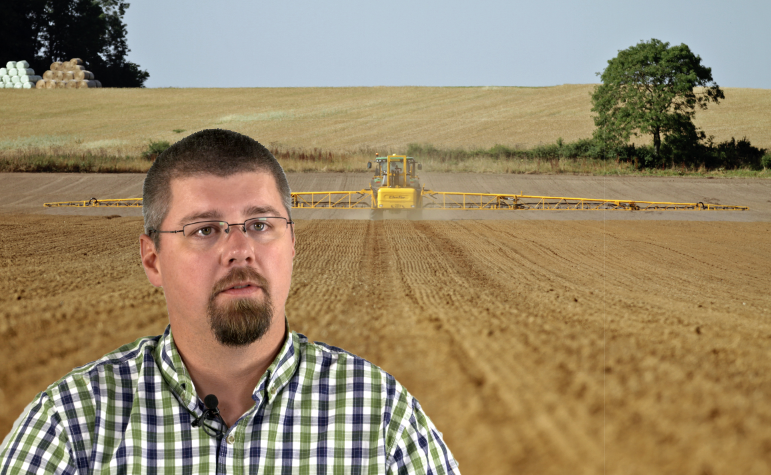
A University of Virginia economist has released new findings that show the widespread adoption of GMO crops by American farmers has resulted in a decreased use of insecticides, but an uptick in the application of herbicides.
Economist Federico Ciliberto has been widely quoted as attributing the increase in herbicide use to the proliferation of glyphosate-resistant weeds, prompting him to raise concerns about the potential environmental impact.
But Andrew Kniss, associate professor of weed ecology and management at the University of Wyoming, said analyzing farm chemical use – and issuing value judgments about the findings – is a bit more complicated than that.
It’s a really complex question and it can’t be boiled down to a single answer when you ask, is herbicide use better or worse than it used to be? Kniss said. It’s different. Some aspects are probably going to be better and some will probably be worse. In ag, nothing is black and white and that is particularly true with most pesticide use. Everything in agriculture is a trade-off.
Kniss recently delved into the finer points of the topic in a lecture delivered to the Cornell Alliance for Science Global Leadership Fellows.
Though many publications are trying to determine whether the shift in herbicide use is good or bad, I personally think they do a pretty bad job of it because they use some pretty flawed metrics, Kniss told the Fellows.
That includes making assessments solely on the amount of herbicide applied per acre, without considering the effects of the active ingredients. Toxicity is not the same between different compounds, he said.
It’s also not the same for all organisms. For example, some products are more toxic to aquatic animals than mammals, but humans tend to favor products that are best for their own health. That’s where value judgments come into play.
Furthermore, both herbicide-resistant (HR) crops and glyphosate-tolerant weeds pre-date the adoption of genetically engineered crops, Kniss noted. And farmers were using herbicides on soy, maize and other crops long before the GM varieties were introduced.
Farmers apply herbicides to 96 percent of America’s agricultural acreage, Kniss said. They’re doing it because they need to manage those weeds or they’re going to lose a substantial amount of crop yield. Even with all the technology to protect crops, they’re still losing about 10 percent of their crop to weeds.
Kniss conducted his own analysis, studying herbicide use trends in soy, cotton and maize, which are heavily planted in GM varieties, including HR traits, as well as rice and wheat, which have no HR varieties.
He was attempting to discern whether there was an increase or decrease in the toxicity of products used – If we’re making things more toxic over time, that’s a bad trend – and in the diversity of herbicides used. When you apply the same herbicide repeatedly to the same land, that’s when you get weed-resistance, he said. High diversity means fewer superweeds.
In all five crops that we looked at, herbicide use in terms of the number of modes of action being applied per acre is increasing, Kniss said. I think it’s pretty safe to say that is not a trend that’s being driven by GMO adoption. That’s a trend that seems to be occurring all over U.S. agriculture.
The increase in herbicide diversity seems to be primarily due to farmers putting more modes of action on each acre, Kniss said. The focus on superweeds as an environmental problem is a little bit misguided because the best way to keep superweeds from occurring is to use way more pesticides, different herbicides. I think that’s a bad idea.
Meanwhile, acute toxicity has decreased in all crops, whether they’re GMO or not, he said. If anything, if we had not had GMO crops the chronic toxicity would have increased even more. Glyphosate represents 70 percent of the herbicide used in these crops, but it barely registers as a [toxicity] impact.
Kniss would like to see more crops developed that are resistant to an array of herbicides because it allows us to chose our herbicide based on what weeds are in the field, rather than what crop is being grown. I want as many tools to manage weeds as I can get.
